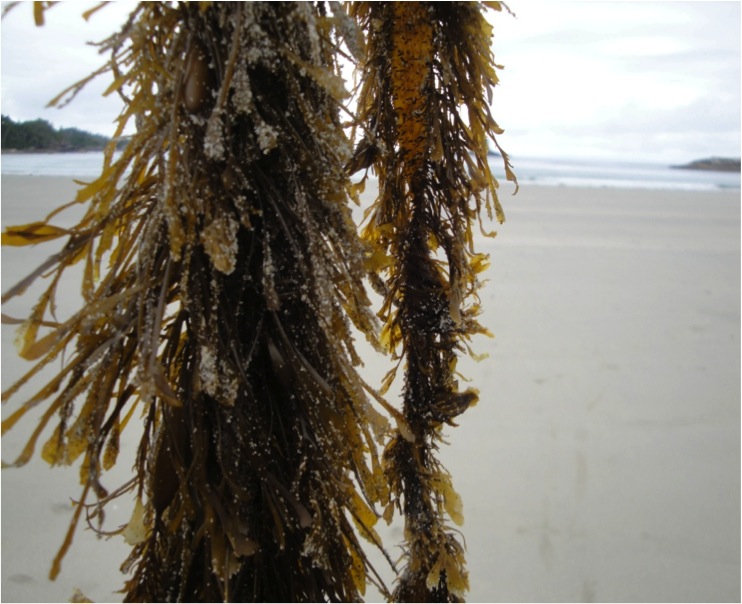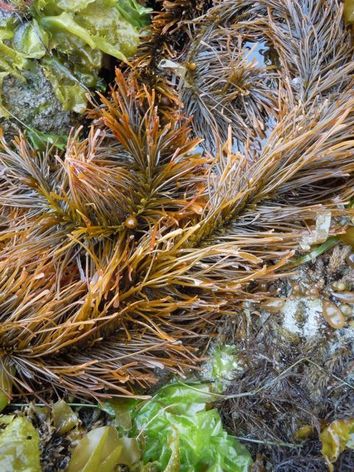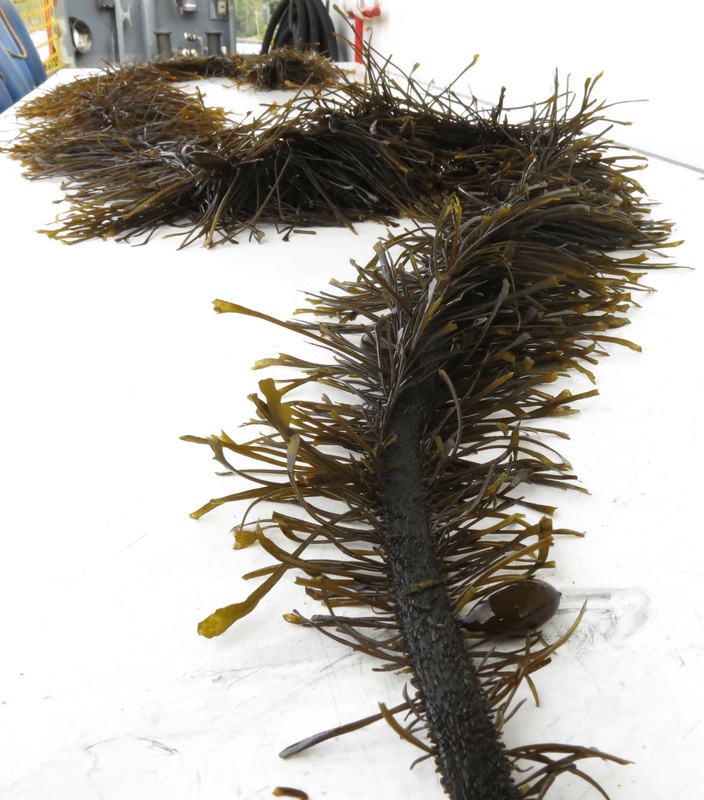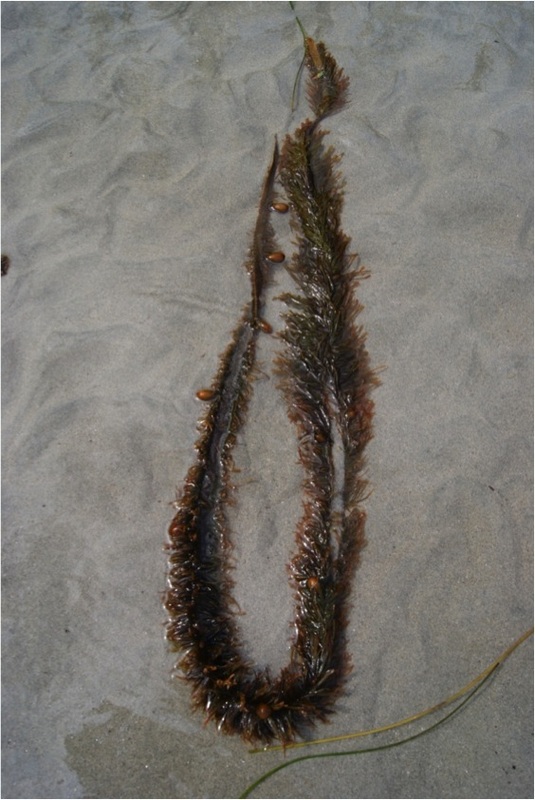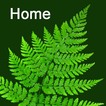Feather boa • Egregia menziesii
{menziesii = for Archibald menzies, botanist during Captain George Vancouver's voyages from 1791-1795}
Identification
This species is aptly named: numerous small blades line the long, flattened stipe, giving the species a furry, feather boa-like appearance. These blades are around 5 cm long, and range from broad to thin and pine needle-like. Some blades form spherical or elongated floats. It is anchored into place by a large holdfast that can reach 25 cm across. The stipe is branched at its base near the holdfast. There may be a dozen of these branches, each of which could grow up to 15 m long (though they are usually shorter). Feather boa kelp is phylogenetically classified as a brown seaweed (Phylum Phaeophyta), but ranges in colour from olive green to dark brown. It is one of the larger brown kelp species found in the intertidal.
Habitat & Range
Feather boa kelp grows on rocks in subtidal and mid-intertidal areas to a depth of 20 m. It is generally found along open coast shorelines that are partially exposed. Its range stretches from Alaska to Baja California. It is often found with Macrocystis.
Intriguing Info
The tall-shelled seaweed limpet (Notoacmaea incessa) lives and feeds on the surface tissues of feather boa kelp.
This species is aptly named: numerous small blades line the long, flattened stipe, giving the species a furry, feather boa-like appearance. These blades are around 5 cm long, and range from broad to thin and pine needle-like. Some blades form spherical or elongated floats. It is anchored into place by a large holdfast that can reach 25 cm across. The stipe is branched at its base near the holdfast. There may be a dozen of these branches, each of which could grow up to 15 m long (though they are usually shorter). Feather boa kelp is phylogenetically classified as a brown seaweed (Phylum Phaeophyta), but ranges in colour from olive green to dark brown. It is one of the larger brown kelp species found in the intertidal.
Habitat & Range
Feather boa kelp grows on rocks in subtidal and mid-intertidal areas to a depth of 20 m. It is generally found along open coast shorelines that are partially exposed. Its range stretches from Alaska to Baja California. It is often found with Macrocystis.
Intriguing Info
The tall-shelled seaweed limpet (Notoacmaea incessa) lives and feeds on the surface tissues of feather boa kelp.
References
O'Clair, R. and Lindstrom, S. Egregia menziesii (Turner) Areschoug. In Klinkenberg, Brian. (Ed.). E-Flora BC: Electronic Atlas of the Plants of British Columbia. Lab for Advanced Spatial Analysis, Department of Geography, University of BritishColumbia, Vancouver. Accessed 22/08/2013.
Harbo, R. M. (1999). Whelks to whales: Coastal marine life of the Pacific Northwest. Madeira Park, BC: Harbour Publishing. P. 206
Authors and editors of page
Kelly Fretwell and Brian Starzomski (2013).
O'Clair, R. and Lindstrom, S. Egregia menziesii (Turner) Areschoug. In Klinkenberg, Brian. (Ed.). E-Flora BC: Electronic Atlas of the Plants of British Columbia. Lab for Advanced Spatial Analysis, Department of Geography, University of BritishColumbia, Vancouver. Accessed 22/08/2013.
Harbo, R. M. (1999). Whelks to whales: Coastal marine life of the Pacific Northwest. Madeira Park, BC: Harbour Publishing. P. 206
Authors and editors of page
Kelly Fretwell and Brian Starzomski (2013).
